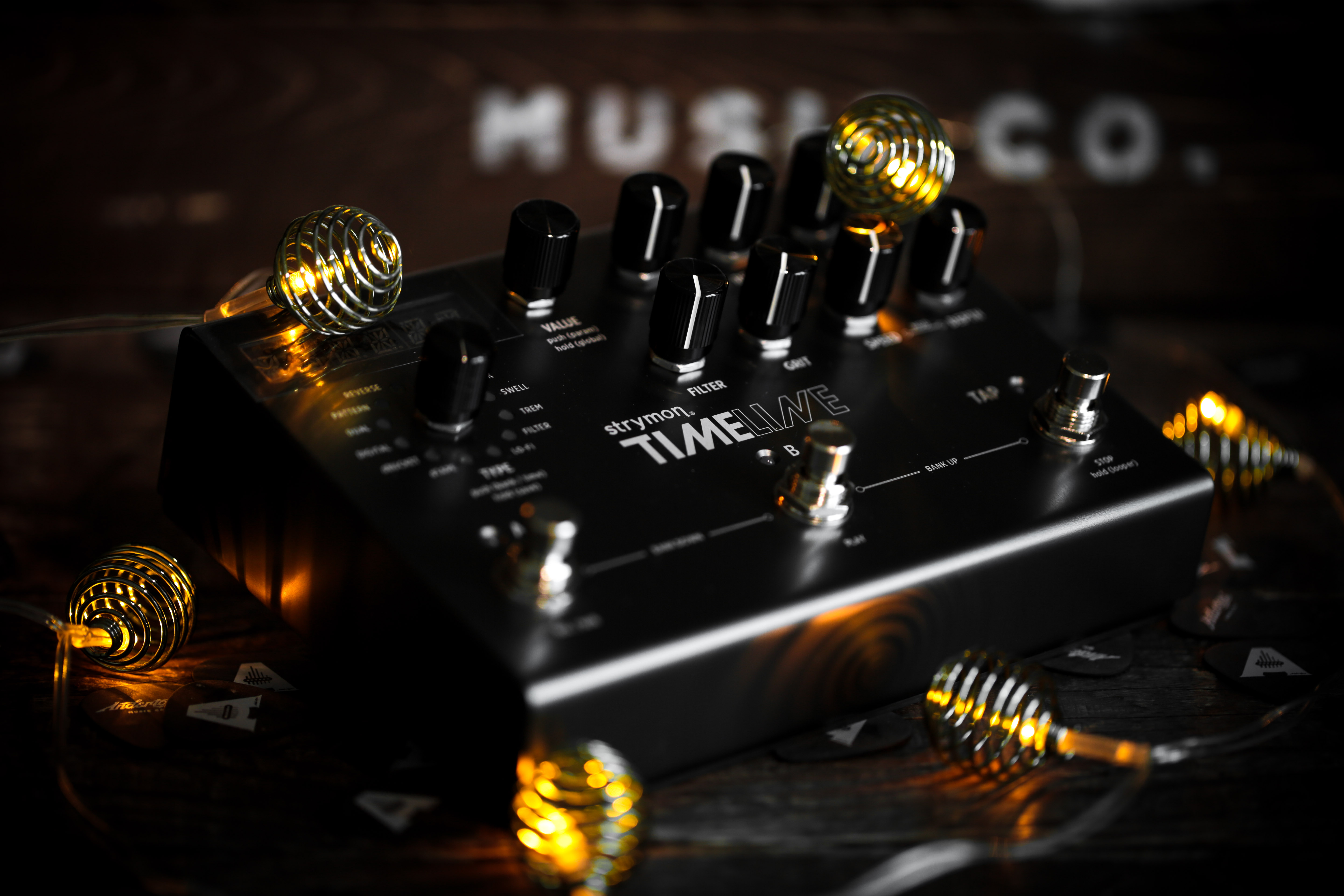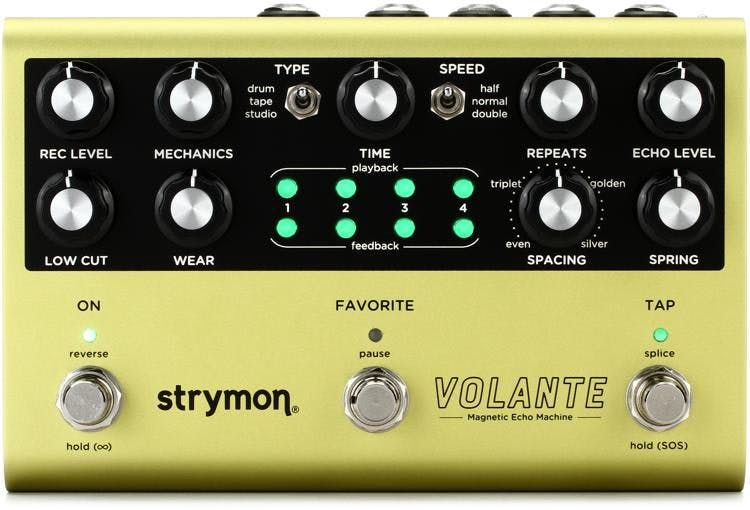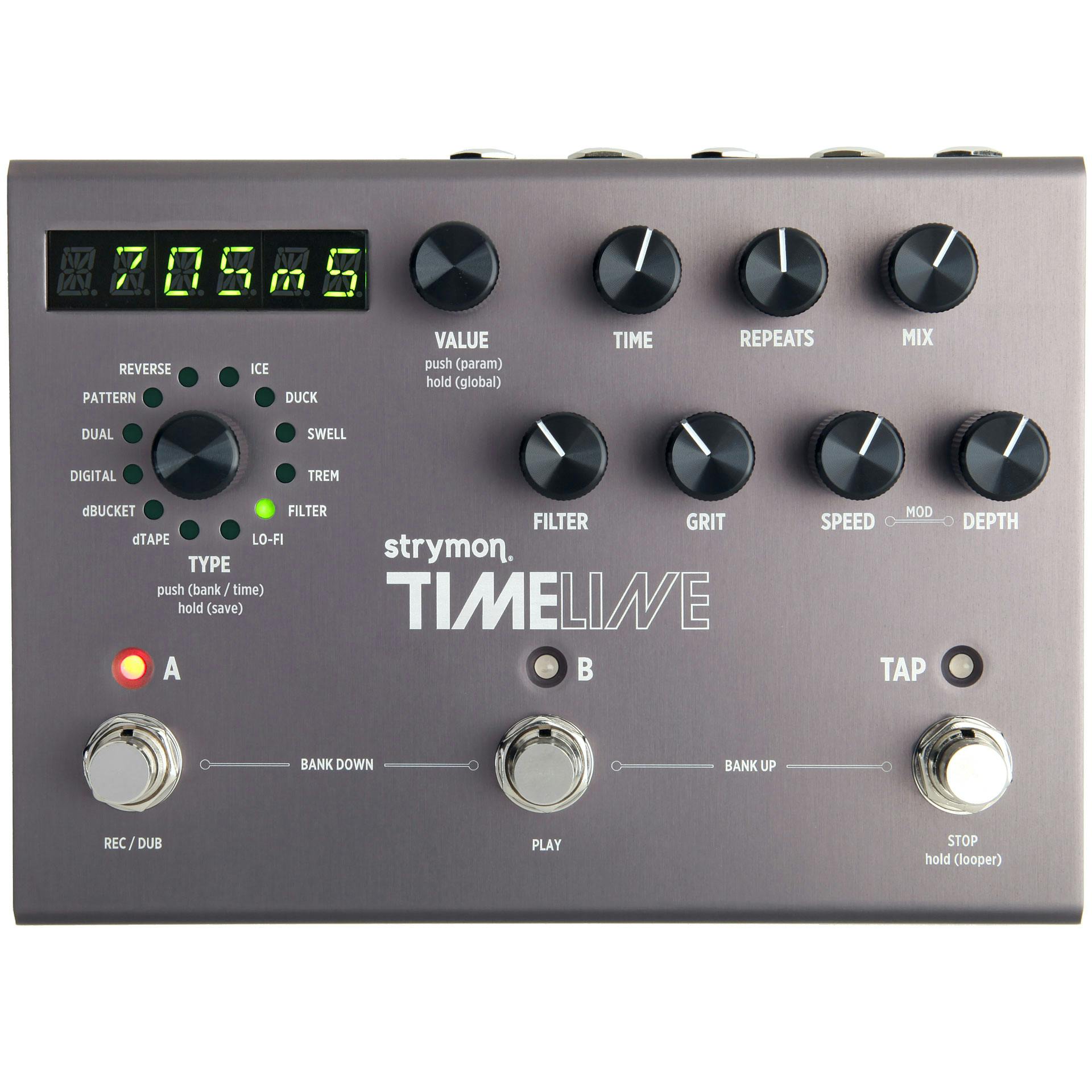- Strymon Timeline Features
- Strymon Volante Features
- Should I buy the Strymon Volante or Strymon Timeline?
Strymon’s Timeline is a renowned boutique delay pedal that quickly made its way into the setups of the world’s best and most creative guitarists. Its comprehensive selection of delay styles and parameters, unwavering sound quality and friendly connectivity options make it one of the go-to stompboxes – no matter the musical style or even the instrument.
The Volante, meanwhile, could be described as a supercharged El Capistan; one of Strymon’s famous smaller format delay pedals. It packs vintage tape delay in with spinning drum and reel-to-reel studio unit recreations. The outcome is a retro-leaning echo/delay, with the Californian company’s trademark extensive control layout.
You might be thinking: “They’re both delay pedals? Why would Strymon make two of the same thing?”
True to an extent, but you’d be ignoring the contrasting tonal differences and in-depth sound options. Let’s take a look at what makes the Timeline and Volante pedals unique:
- Strymon Timeline has 12 different delay sounds
- Inbuilt 30-second looper
- 200 user-programmable presets
- Strymon Volante produces vintage spinning drum, tape and reel-to-reel delay
- Analogue, class-A stereo JFET preamp

Strymon Timeline Features
The Timeline handles digital, tape, bucket, ambient, reverse delay and plenty more with absolute ease. Its digital design lends itself to anything the Strymon engineers could pack into the one pedal. Overall, it houses 12 delay machines with seven control knobs to alter the qualities of each effect.
That’s a whole lot, considering each machine type has its own specific delay parameters, as well as extended features like infinite repeats, tap tempo and a looper with recording and overdub possibilities.
Controls
Controls include the standard Time, Repeats and Mix selections you’d expect on a delay pedal. Strymon take it one step further with a Filter, which lets you select the frequency range of the repeats and Grit, that adds distortion and artefacts. It also packs a separate modulation to add character to your delay. Alter these settings with Speed and Depth dials.
Save Your Sounds
You can also design your settings externally thanks to MIDI connections and bank through the 200 built-in preset slots. Basically, you can customise whatever you like with the Timeline and you don’t have to throw any of the sounds away when you want a change.
There really aren’t any downsides to the Timeline. You can use it with guitars, synths or other string instruments. In addition, it runs in stereo and supports the Strymon MultiSwitch selector pedal or an expression pedal. One thing you might hold against it is that it doesn’t completely focus its efforts on a single type of sound, like the Volante.
Strymon Volante Features
Strymon announced the Volante at NAMM 2019 and it definitely had an impact on the guitar community. It packs three iconic delays into one analogue, class-A unit with all-new settings not seen on any delay effect pedal before. It’s designed from the ground up to provide a specific retro sound, in contrast to the diverse Timeline. It sacrifices the number of delay machines for more tweaking capabilities. Based on the famous Binson Echorec which was known for it’s warm, fat, decaying delay tones.






Responses & Questions